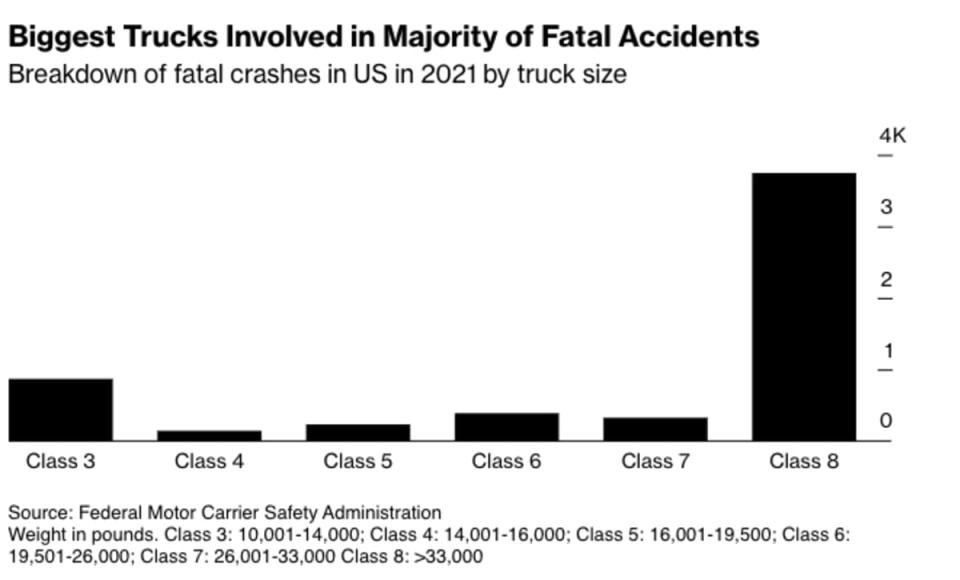Driverless truck companies plan to ditch human co-pilots in Texas in 2024

A Peterbilt tractor equipped with Aurora Innovation's self-driving system. (AP)
Driverless trucks with no humans on board will soon cruise Texas highways if three startup firms have their way, despite objections from critics who say financial pressures, not safety, is behind the timetable.
After years of testing, Aurora Innovation, Kodiak Robotics and Gatik AI expect to remove safety drivers from trucks that are being guided by software and an array of sensors including cameras, radar and lidar, which sends pulses of light that bounces off objects. The companies have already hauled cargo for big names such as Walmart Inc., Kroger Co., FedEx Corp. and Tyson Foods Inc.
“At the end of the year, we anticipate getting to the point where we begin operating those trucks without drivers on board,” Chris Urmson, co-founder and chief executive officer of Pittsburgh-based Aurora, said in an interview.
All of the companies say they’re ready to deploy the technology, though they know there’s little-to-no margin for error. The risk is worth it, they say, because the technology promises to improve highway safety and lower transportation costs.
Detractors say the companies have incentive to reduce the losses that investors have been financing during the development and testing phase.
“We are concerned about the lack of regulation, the lack of transparency, the lack of comprehensive data collection,” said Cathy Chase, president of Advocates for Highway and Auto Safety. The list of opponents also includes the International Brotherhood of Teamsters, the 1.3 million member union that represents drivers and warehouse workers.
And trucks pose severe dangers, opponents say, because they will be traveling at highway speeds and weigh as much as 80,000 pounds, or more than 15 times as much as General Motors Co.’s troubled Cruise driverless robotaxi.
The federal government for now has left regulation of driverless large trucks mostly up to states, creating a patchwork of rules. California suspended Cruise operations in October after several incidents in San Francisco. California’s lack of rules for allowing trucks to be tested on public roads encouraged the three driverless truck firms and others to turn to Texas for testing and deployment.
The difficulties that Cruise’s robotaxis faced on the streets of San Francisco — unpredictable pedestrians, sudden road closures and emergency vehicles — are less of a problem for driverless trucks, according to the companies. Trucks largely move cargo on fixed routes and mostly on highways that require much less interaction with passenger vehicles and pedestrians.
Besides saving on trucker pay, the trucks can travel longer than the 11-hour limit now on human drivers. The sensors scan in all directions several times a second to identify objects, speeding up reaction time. There are even estimated savings on emissions of 10% or more because the vehicles will stay just below the speed limit and travel at a steady cadence, the companies say.
And human drivers don’t guarantee safe operations. In 2021, 5,700 large trucks, which weigh 10,001 pounds or more, were involved in fatal crashes, according to statistics compiled by the Federal Motor Carrier Safety Administration. A majority of those incidents came from trucks with a gross weight of 33,001 pounds or more. These so-called Class 8 trucks are similar in size to those in Kodiak and Aurora fleets.

While driverless trucks haven’t had any at-fault incidents with other vehicles in testing with safety drivers, the FMCSA report suggests that they may not be immune to accidents. Nearly two-thirds of fatal accidents occur when a person, object, animal or other vehicle veers into a truck’s lane. Data collected by a self-driving truck’s computer system will be key to determining what caused an accident.
“They can’t just say we’re better than humans,” said Brian Ossenbeck, a transportation industry analyst with JPMorgan Chase, of the companies planning to go driverless this year. “They have to reach that superhuman level, at least initially, until there’s broader acceptance. And who knows how long that would take.”

 Yahoo Autos
Yahoo Autos 
